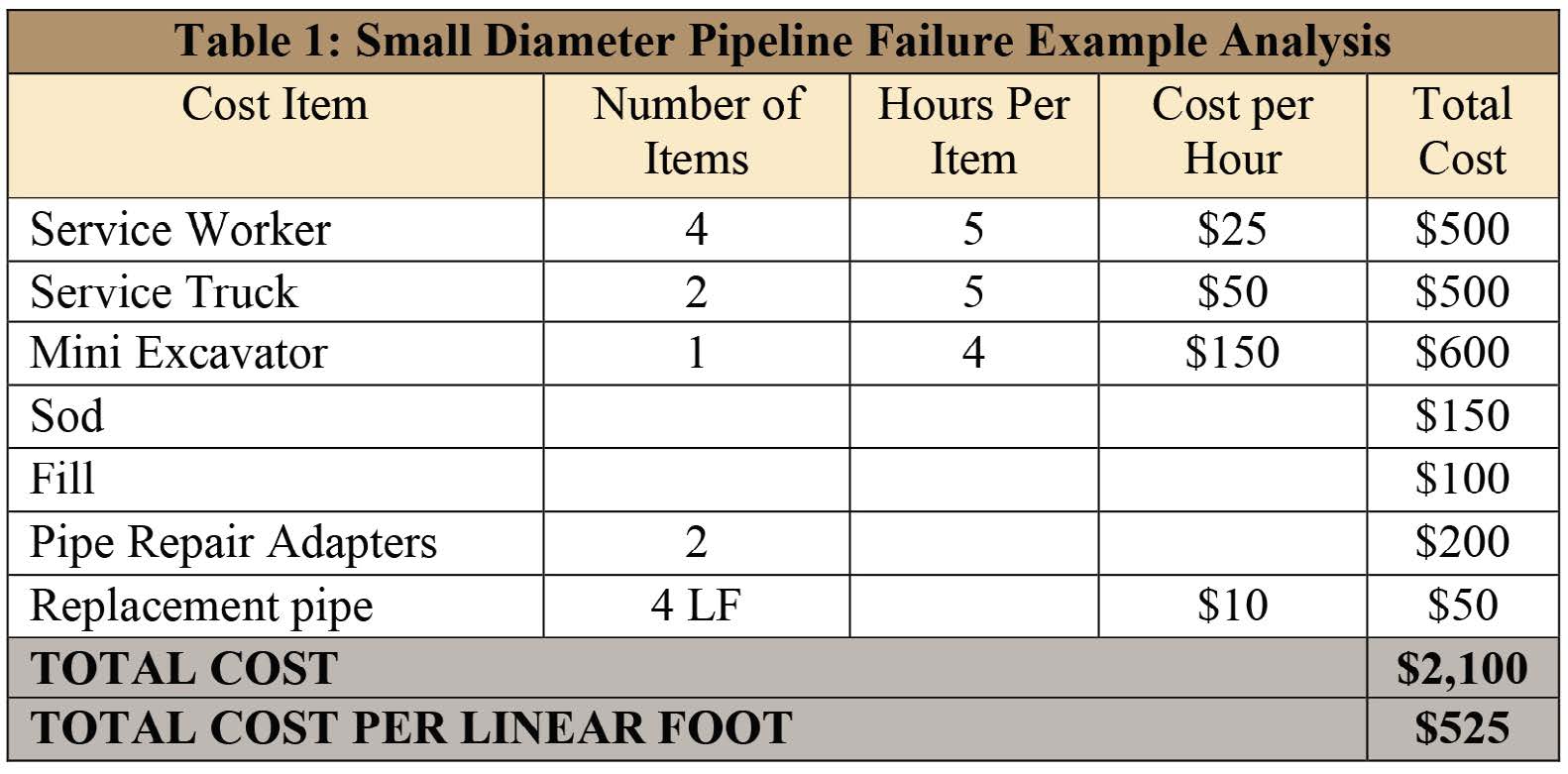The Economics of Water Main Failures
Published on by Water Network Research, Official research team of The Water Network in Case Studies
Most municipalities that have been maintaining aging infrastructure for decades simply absorb the effort and costs required to repair water main pipeline breaks when they occur. Seldom do many municipalities make the efforts required to track the costs and evaluate the cost benefit of proactively rehabilitating the existing pipe line versus continuing to repair emergency breaks. The overall costs of the emergency breaks on larger diameter pipeline systems can grow exponentially.
Additionally, social and environmental costs associated with water main pipeline failures are often borne by third parties, such as customers, residents, businesses and insurance companies. Social costs may include loss of business revenue due to increased traffic congestion or poor accessibility, worker productivity loss, loss of time due to traffic delays, accelerated deterioration of alternate roads that must be used during maintenance of traffic activities, damage to established landscaping and property values, and increased accident rates. Environmental costs can include increased greenhouse gas emissions, noise, impact to natural resources, dust and debris and any additional environmental impact due to uncontained fluid release.
This article will detail potential actual costs incurred to fix water main failures. For the purpose of relevant comparison, various cost scenarios for an escalating level of water main pipeline failure impacts are presented. Two lesser cost failure scenarios that many utilities often encounter were evaluated for their social, environmental and economic impacts and a third scenario was reviewed from available technical literature for the potential for a much more catastrophic failure. All three failure scenarios are presented here.
Failure Scenario 1
The first water main pipeline failure scenario is of a more routine nature. The failure of a small diameter (less than 6 in.) pipeline in question is more of a small section circumferential failure that is often detected as a growing leak from the distribution system. Initially, a small two-man crew would be dispatched to the site to evaluate the full extent of the required repair work. Evaluation of the failure indicated four workers were required to decommission the existing water main, excavate to the failed pipeline and install mechanical adapters and replace 4 ft of pipeline.
The crew that responded to the initial work order was able to isolate the section of water main pipeline relatively easily by locating existing valves that were still operational. The isolated section of water main pipeline only impacted four potable water customers so social impact was relatively minimal. Also, the water loss from the leak was also minimal so no efforts were made to quantify the water lost. No direct environmental damage was observed that was not easily restored by the crew. Therefore, the cost evaluation for the first scenario was primarily limited to man hour, equipment and material costs.

Economic analysis of the water main pipeline failure is provided in Table 1. It is useful to note that the actual replaced section of existing pipeline was limited to approximately 4 linear feet (lf) of small diameter pipe. The cost per lf of replacement was $525 per lf. Construction costs to replace potable water main pipelines for preplanned projects vary considerably over North America and for a litany of other items, such as project size, replacement method, pipe material, depth, soil conditions, risk, project location and many other variables. Comprehensive installation costs to complete a pre-planned project with minimal restoration costs can vary from $25 per lf to $175 per lf for a small diameter water main project. When the replaced length of pipeline during the emergency repair is compared to a proactive approach to replacing the existing pipeline, it is easily observed that emergency replacement is simply not cost effective when compared to a proactive replacement program.
By Alan Ambler
Taxonomy
- Utility Management
- Public Utility
